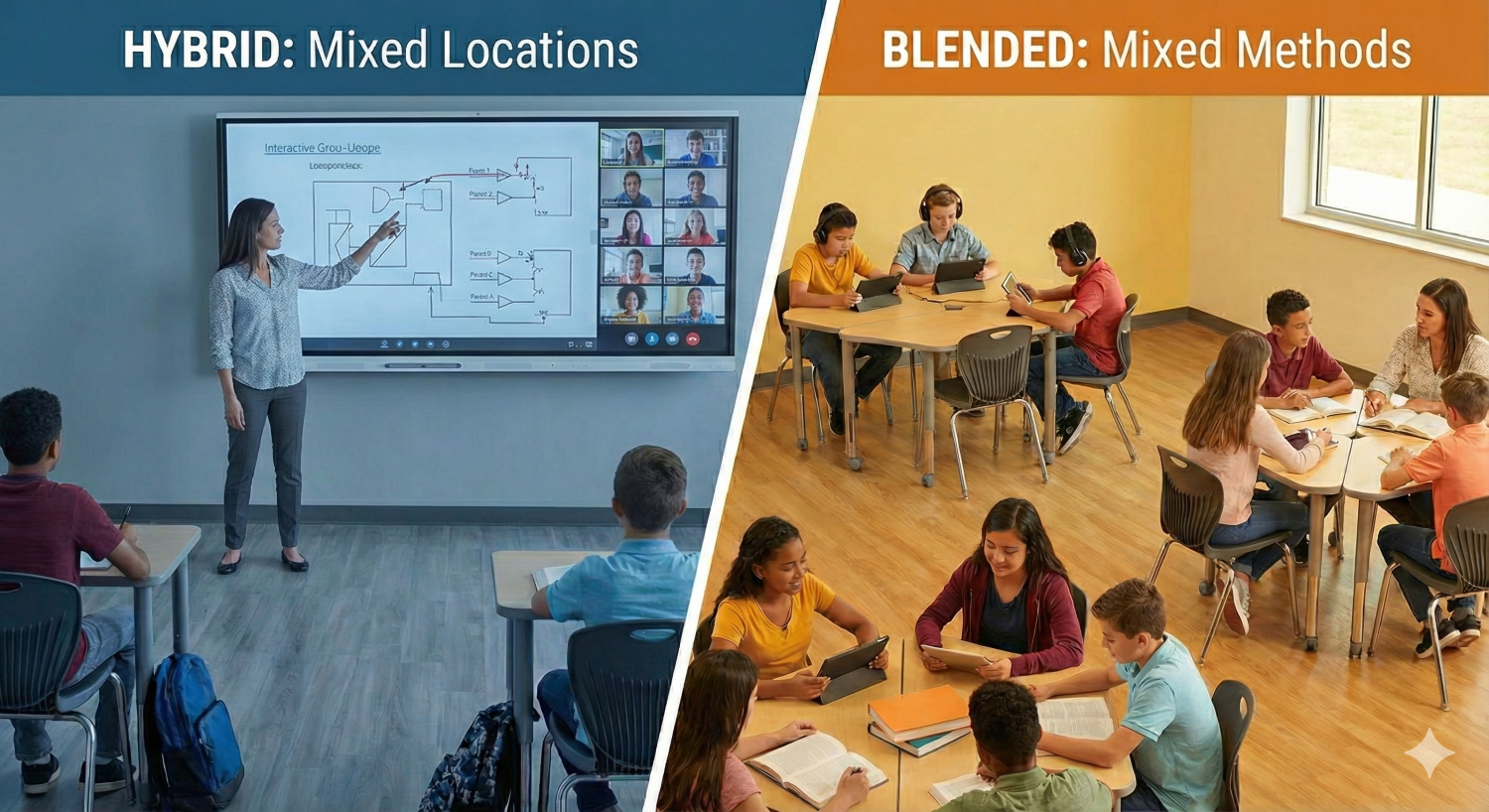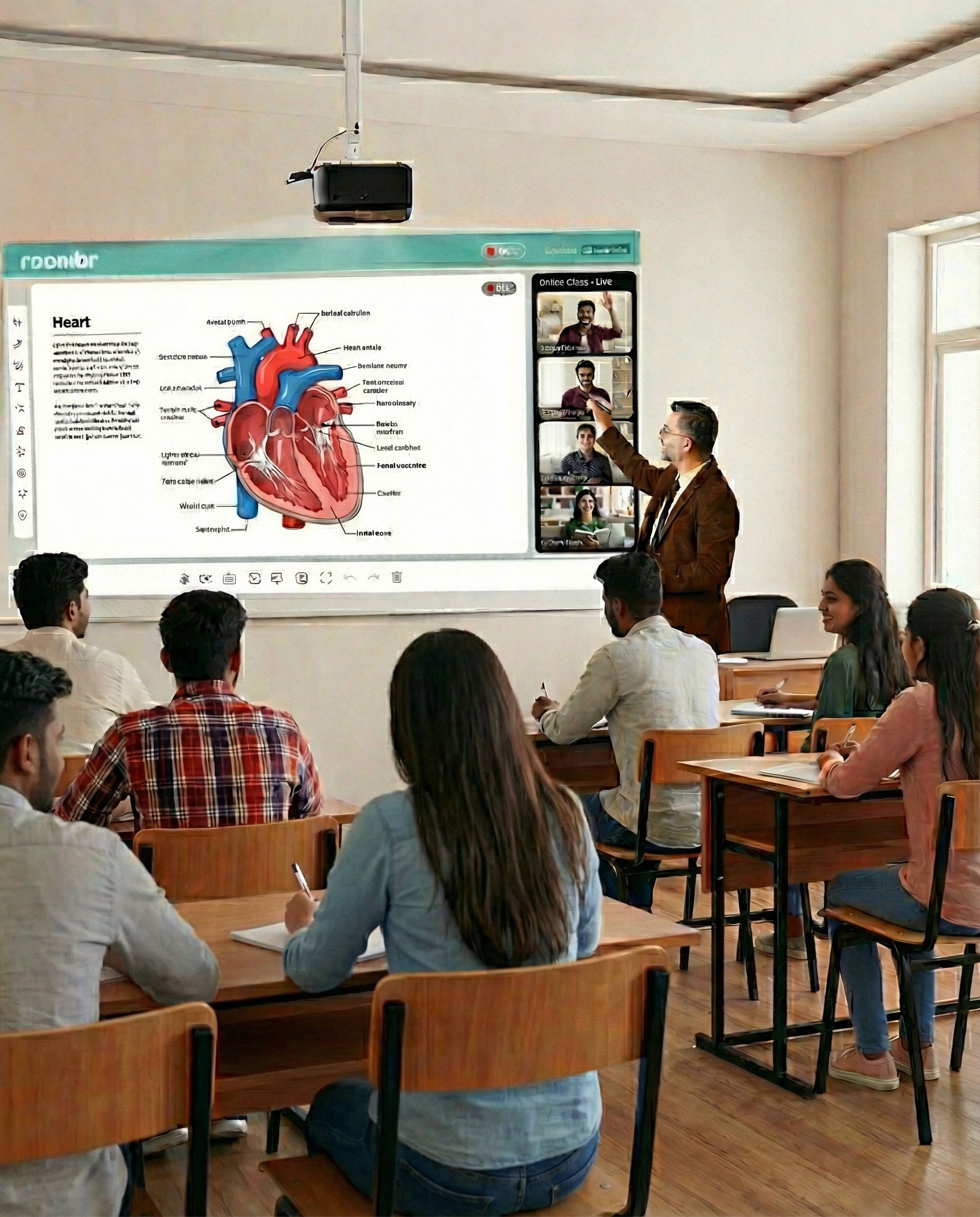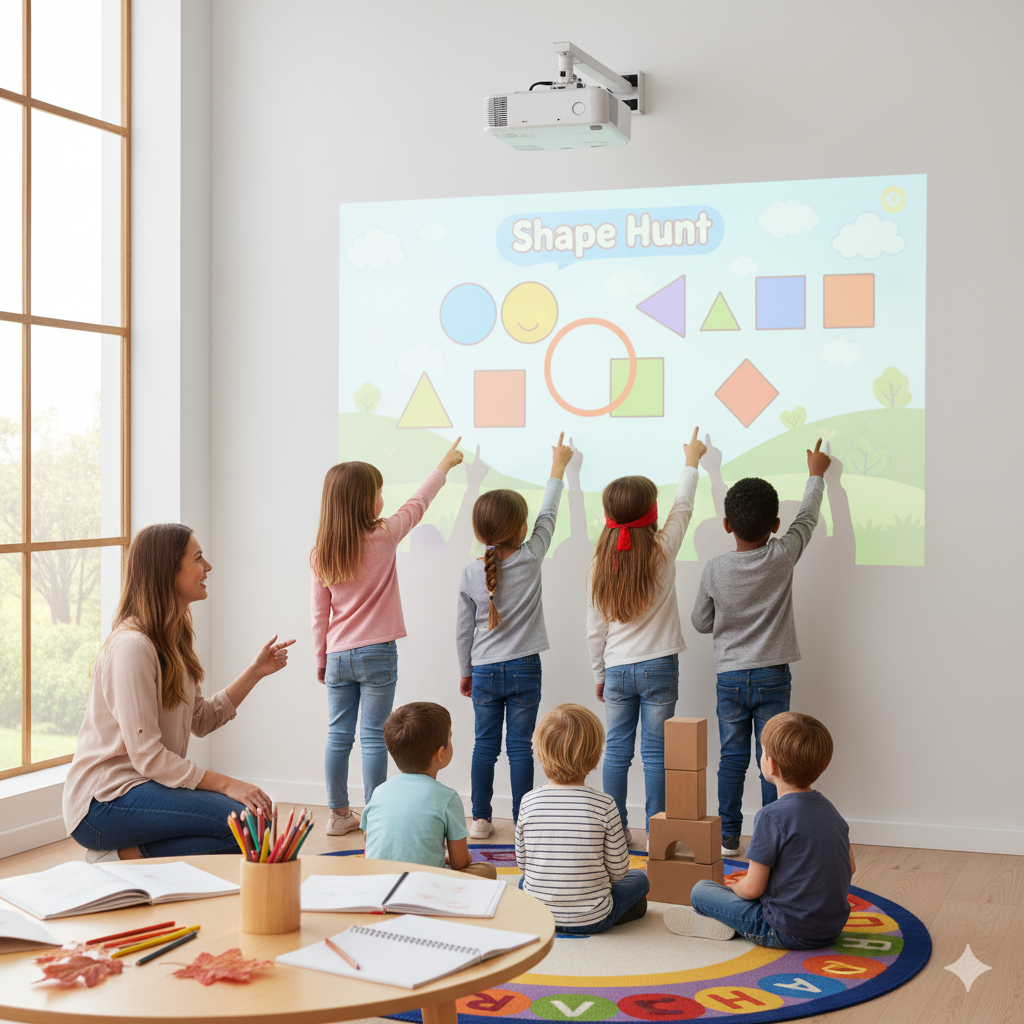What Is E-Learning in Education? Importance and Benefits

India’s classrooms are undergoing a silent revolution. From tier-1 cities to small towns, blackboards are being replaced by interactive displays, and textbooks are going digital. At the heart of this transformation lies e-learning in education, supported by a strong push towards the digital classroom model. But while many institutions have adopted digital tools post-pandemic, not all have unlocked the full potential of e-learning yet.
If you're an educator or decision-maker in a school or college, understanding how e-learning integrates with your broader digital classroom setup can be the first step toward a future-ready institution. This blog discussed the concept in detail considering the unique needs of e-education in India.
What Is E-Learning in Education?

Source: Freepik
At its core, e-learning refers to the use of electronic technologies to access educational content, often beyond the walls of a traditional classroom. This includes video-based lessons, live virtual classes, digital assessments, recorded lectures, and app-based learning modules.
In the Indian education system, e-learning in education doesn’t just mean online classes. It includes hybrid models, smart classrooms, ICT labs, and digital collaboration in classrooms. When structured well, e-learning enables more inclusive, scalable, and personalized education experiences.
The Importance of E-Learning in India’s Education System
India has over 1.5 million K–12 schools and over 1,000 universities, many of which face challenges like staff shortages, inconsistent teaching quality, and infrastructure gaps. Thus, e-learning is a way to solve some of these deep-rooted issues.
It supports:
- NEP 2020’s vision of flexible, tech-enabled, and multilingual learning
- Better access to quality content across socio-economic and geographical divides
- A shift towards competency-based, experiential learning
Types of E-Learning in Education
E-learning in education isn't one-size-fits-all. Different formats serve different purposes depending on budget, staff readiness, and student needs.
1. Learning Apps
Simple to implement, mobile-first, and great for revision, apps like DIKSHA or Khan Academy support self-paced learning.
2. Digital Classrooms
These are digitally equipped classrooms that integrate interactive displays, projection systems, content libraries, and real-time collaboration tools. They’re ideal for in-school and hybrid learning with tech-enhanced delivery.
3. ICT Labs
Set up under government initiatives or private programs, ICT labs include desktops, software, and digital content used in a computer lab setup.
4. Virtual Learning
Virtual learning is like a classroom without walls. Whether it’s a live session on Zoom, a recorded lecture on Google Classroom, or assignments uploaded through an LMS, students can now learn from anywhere — at home, during travel, or even after school hours.
Key Benefits of E-Learning for Indian Institutions
The impact of e-learning in education isn’t limited to student engagement—it transforms how institutions function:
- Enhanced Teaching Resources: Digital tools give teachers access to lesson plans, simulations, assessments, and real-time feedback systems.
- Streamlined Administration: Attendance, content sharing, assignments, and grading can all be automated with the right platform.
- Professional Development: E-learning enables ongoing teacher training which is essential in a country where the pupil-teacher ratio is still 26:1 in many states.
- Seamless Curriculum Integration: NCERT content, CBSE modules, or even state board curricula can be digitally mapped into classroom delivery through platforms like DIKSHA.
- Cost Savings: Institutions can reduce recurring costs on physical infrastructure, printing, and even transport (for coaching).
- Scalability: Once an e-learning infrastructure is in place, onboarding more students or expanding to new locations is easier and more cost-effective.
Advantages of E-Learning for Students
E-learning is especially beneficial for students in India’s diverse and often unequal educational landscape. It creates a more inclusive and engaging environment for every type of learner.
- Equal Access to Expert-Led Content: Regardless of the teacher’s expertise in local schools, students can now learn directly from top educators through recorded lessons or curated platforms.
- Improved Digital Literacy: Using e-learning tools prepares students for technology-driven workplaces and competitive exams that require digital familiarity.
- Multimedia-Supported Learning: Students can revisit concepts, pause lessons, and learn at their own speed without the pressure of keeping up with the whole class.
- Collaborative Learning: Students can work together on group projects, brainstorm live, or discuss topics asynchronously, even across different locations.
How to Set up an E-Learning-Enabled Digital Classroom
Getting started doesn’t have to mean a massive tech overhaul. Even small upgrades can make a huge difference when implemented strategically.
1. Hardware + Software
Invest in an integrated digital classroom solution:
- Interactive display or projector + IR pen (Roombr is plug-and-play with minimal installation needs)
- A computing unit (like a built-in PC or external laptop)
- Audio-visual tools like dual cameras and mics
- A learning platform or content library compatible with NCERT or board syllabi
2. Internet and Power Backup
- Minimum 10–15 Mbps internet per classroom is ideal
- Install backup power to ensure uninterrupted sessions during outages
- Offline sync options for areas with poor connectivity
3. Teacher Onboarding
Even the best technology for education can fail without proper planning and adoption:
- Begin with hands-on training for 1–2 subject teachers
- Use peer-learning sessions to cascade knowledge
- Encourage experimentation and start with one class or subject
Ready to explore a plug-and-play digital classroom built for Indian schools and colleges?
Foziya Abuwala
Share
Step Into the future of
Education with Roombr

















